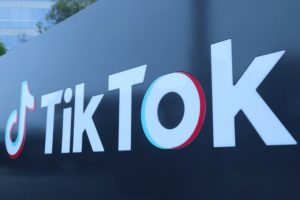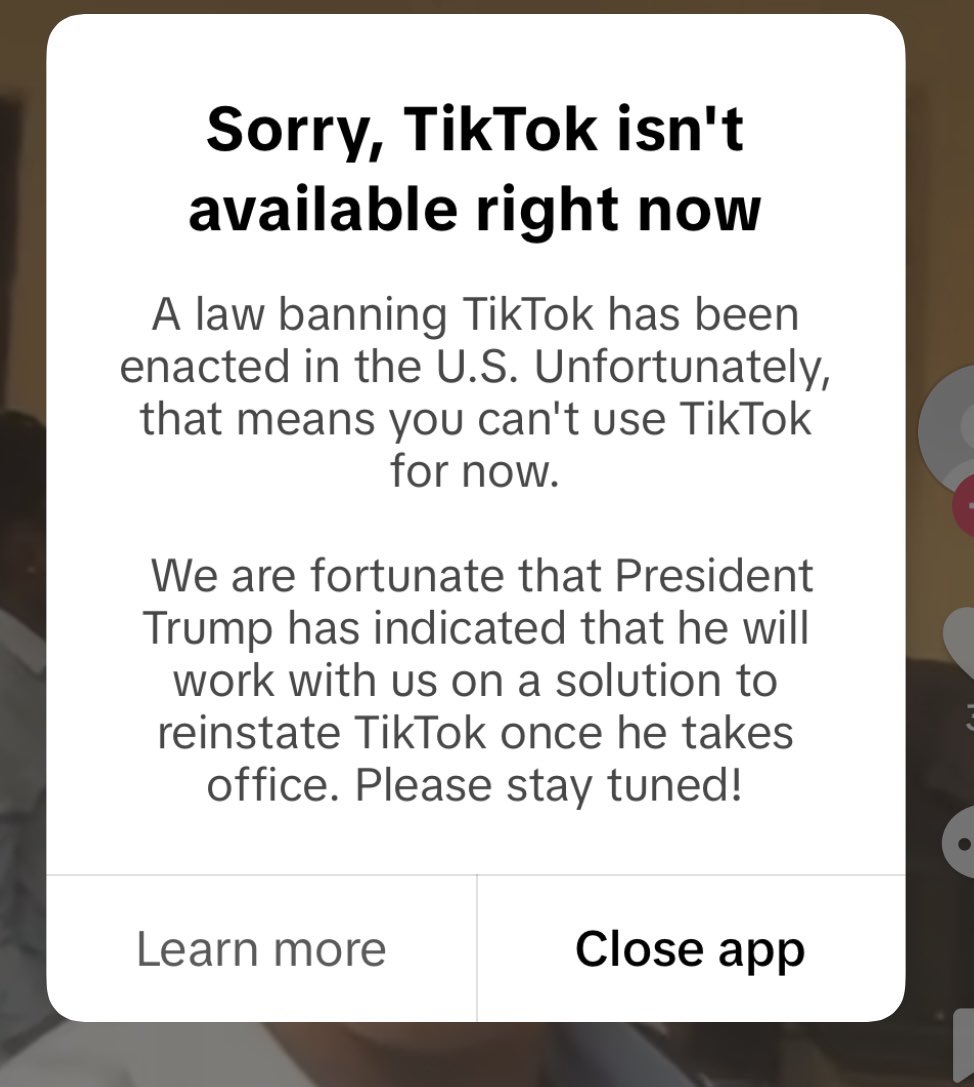
By Adeyemi Adekunle
As the U.S. woke up to a digital blackout of the renowned social media app TikTok, the incoming United States President Donald Trump has announced plans to issue an executive order on Monday, aimed at giving TikTok’s China-based parent company, ByteDance, more time to secure an approved buyer and stave off a permanent ban.
Trump’s bold move comes amid growing public outcry from TikTok’s millions of U.S. users, who were left stunned when the app abruptly went offline Saturday night.
The platform’s sudden disappearance followed the enforcement of a new federal law, passed in April and upheld last week by the Supreme Court, which mandated ByteDance sever ties with TikTok’s U.S. operations due to national security concerns.
The law, signed by outgoing President Joe Biden, gave ByteDance until January 18 to comply or face removal from U.S. app stores. ByteDance’s refusal to sell, compounded by a lack of finalized deals with potential buyers, triggered the shutdown.
In a post on his Truth Social account Sunday, Trump promised immediate action. “Americans deserve to see our exciting Inauguration on Monday, as well as other events and conversations,” he wrote. Trump’s proposed executive order would grant ByteDance a critical 90-day extension to finalize a sale, allowing TikTok to resume operations in the U.S. while shielding associated companies like Apple and Google from liability for previously hosting the app.
Trump suggested an ownership model where the United States could potentially hold a 50% stake in a joint venture overseeing TikTok’s operations. “By doing this, we save TikTok, keep it in good hands, and allow it to stay up,” Trump asserted. “Without U.S. approval, there is no TikTok. With our approval, it is worth hundreds of billions—maybe trillions.”
For now, millions of U.S. users are met with a stark message when they open the app: *“A law banning TikTok has been enacted in the U.S. Unfortunately, that means you can’t use TikTok for now.”* The platform’s website offers users a chance to download their data, though TikTok warns that processing these requests could take several days.
While the shutdown caught users off guard, experts had warned this scenario was imminent. Apple and Google complied swiftly with the law, removing TikTok from their app stores on Sunday. Other apps developed by ByteDance, including a proposed alternative platform for influencers, were also removed.
“The sudden shutdown sent shockwaves across social media,” said Esther King, a digital policy analyst. “For many users, TikTok isn’t just an app—it’s a community and a livelihood.” Content creators, who heavily rely on the platform to engage with followers and generate income, expressed frustration and uncertainty about the future.
The Biden administration clarified over the weekend that it would not actively enforce the law’s provisions to block TikTok access, leaving implementation to Trump’s incoming administration. President Biden’s decision to sign the law earlier in his presidency reflected bipartisan concern about ByteDance’s ties to the Chinese government and potential risks to national security.
ByteDance has long maintained that TikTok’s U.S. user data is stored domestically and is insulated from Chinese interference. However, officials and lawmakers argue that the app’s algorithm and data collection practices could allow Beijing to access sensitive information or influence American users. The Supreme Court’s recent decision to uphold the statute further solidified these concerns, leaving ByteDance little room for legal recourse.
TikTok and ByteDance unsuccessfully fought the law in court, arguing it infringed upon First Amendment rights. “This law is not about protecting national security; it’s about silencing a platform that allows young voices to thrive,” a company spokesperson said last week.
Despite the app’s blackout, Trump has hinted that negotiations with ByteDance may gain traction under his leadership. Several U.S. tech companies, including Oracle and Microsoft, had previously expressed interest in acquiring TikTok’s U.S. operations, though talks stalled over data ownership and valuation disputes. Trump’s proposed joint-venture model could present a compromise that satisfies national security demands while preserving the platform.
Public reaction to Trump’s announcement has been mixed. Supporters of the ban argue that the app’s popularity cannot outweigh its security risks, while critics view the blackout as an overreach that stifles creative expression and economic opportunity for millions of users.
For TikTok users like Emily Rogers, a 22-year-old college student from Los Angeles, the ban feels personal. “TikTok was my escape. It connected me with people and ideas I’d never encounter otherwise,” she said. “This feels like losing a part of myself.”
The app’s absence has also left a void in the digital advertising landscape, with brands scrambling to find alternative platforms to reach their target audiences. TikTok’s explosive popularity—boasting over 100 million monthly active users in the U.S.—had made it a cornerstone of modern marketing strategies.
As Trump prepares to take office on Monday, his handling of the TikTok crisis could set the tone for his administration’s broader tech and foreign policy agenda. By promising swift action to reinstate the app, Trump is positioning himself as a champion of free enterprise and digital culture, even as questions linger about the potential risks posed by TikTok’s Chinese origins.
For now, millions of Americans are left in limbo, hopeful that Trump’s executive order will bring TikTok back. Whether the platform’s return will mark the beginning of a more secure and stable chapter in its U.S. operations remains to be seen. What’s clear is that the battle over TikTok has become a defining issue in the digital age—one that underscores the intersection of technology, geopolitics, and personal freedoms.




